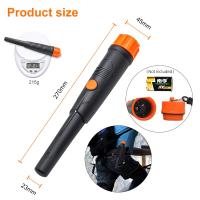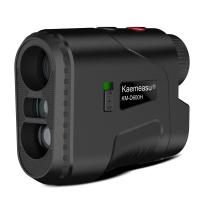How Deep Will Metal Detectors Work?
How Deep Will Metal Detectors Work? A Comprehensive Guide to Understanding Detection Depth

Metal detectors have been an essential tool for a variety of industries, ranging from treasure hunting and archaeology to security screening and construction. However, one of the most frequently asked questions among enthusiasts and professionals alike is: How deep can a metal detector actually detect metal?
The answer is not as straightforward as it may seem. The depth at which a metal detector can detect a target depends on a wide range of factors. These factors are not only technical but also environmental. Understanding these variables can help users choose the right equipment for their needs and set realistic expectations about what a metal detector can and cannot do.
1. Basic Metal Detector Principles
Before diving into the specifics of detection depth, it’s essential to understand how metal detectors work in general. At their core, metal detectors are designed to generate an electromagnetic field through a coil, which induces eddy currents in conductive metals nearby. When these eddy currents interact with the magnetic field created by the detector, they send a signal back to the detector’s receiver, alerting the user to the presence of metal.
This process is influenced by several key factors:
- Frequency: Metal detectors operate at different frequencies, and the frequency of the electromagnetic field plays a significant role in detection depth. Higher frequencies are typically better for detecting smaller, shallow objects, while lower frequencies can penetrate deeper but are more likely to miss small objects.
- Coil Size: The size of the search coil is another factor influencing depth. Larger coils can cover more area and tend to detect deeper targets, but they may not be as sensitive to smaller objects or objects close to the surface.
- Target Conductivity: The type of metal being detected also affects depth. Conductive metals like gold, silver, and copper are more easily detected at greater depths, while non-ferrous metals like aluminum and lead may be harder to detect at deeper levels.
2. Factors Influencing Detection Depth
Several factors influence how deep a metal detector can go. These include:
2.1 Metal Type and Size
The type of metal and its size significantly influence the detection depth. Larger and more conductive metals, like coins or larger pieces of gold, will generally be detected at deeper levels than smaller objects or less conductive metals. For example, a coin made of silver or copper might be detected at depths of 8 to 12 inches, while a gold nugget might be detected at a similar or slightly deeper depth, depending on its size and composition.
2.2 Ground Conditions
The soil or ground conditions play a massive role in how deep a metal detector can effectively detect a target. Factors like mineralization, soil moisture, and even the presence of certain salts or metals can impact detection depth.
- Mineralization: Highly mineralized soils (common in areas with high iron content) can interfere with a metal detector’s ability to accurately pick up signals from deeper objects. This can cause false signals or reduce the effective depth range.
- Soil Moisture: Wet soil tends to increase the conductivity of metals, which can allow for deeper detection. On the other hand, dry soil may limit the detection depth.
- Saltwater: Metal detectors used in beach and underwater environments must be designed to handle the high mineralization of saltwater, which can significantly affect detection depth.
2.3 Detector Technology and Design
The quality of the metal detector itself, including its design and technology, will have a direct impact on detection depth. More advanced models, especially those used in professional settings like archaeology or treasure hunting, often come with features that extend detection depth.
- Multi-frequency Detectors: These detectors can operate across a range of frequencies simultaneously, which helps improve depth and sensitivity in challenging ground conditions. Multi-frequency detectors are particularly useful in areas with high mineralization or mixed ground conditions.
- Pulse Induction (PI) Detectors: Pulse induction technology is ideal for detecting deep objects, especially in highly mineralized environments like saltwater beaches. These detectors emit short, powerful bursts of energy and measure the time it takes for the signal to return, making them excellent for deep penetration but less effective for detecting smaller objects.
- VLF Detectors (Very Low Frequency): These detectors are the most common for general-purpose metal detection. They operate on a single frequency and are effective for shallow to moderate depths, but they can struggle in highly mineralized soils. VLF detectors are ideal for dry land and are often used in coin hunting or relic hunting.
2.4 Target Depth Expectations
Now that we’ve covered the basics, let’s address the actual detection depth for various types of targets. The general rule of thumb is that most detectors can detect objects at depths ranging from a few inches to around 12 inches, with some professional-grade models capable of detecting larger items at even greater depths.
Here are some general estimates of detection depths for different types of targets:
- Coins (Silver or Copper): Typically, metal detectors can detect standard-sized coins (such as US pennies, dimes, or quarters) at depths of 6 to 10 inches, depending on the detector’s quality and the soil conditions.
- Large Objects (Iron, Bronze): Larger items like relics, iron tools, or metal containers can be detected at depths of 10 to 18 inches. Professional detectors may reach even greater depths for these items.
- Gold Nuggets: The depth at which a gold nugget can be detected depends on its size and the detector's sensitivity. Small nuggets may only be detectable at depths of 4 to 6 inches, while larger nuggets can be detected at depths of up to 18 inches or more.
- Underwater Metal Detection: Underwater metal detectors, especially those used by treasure hunters on the beach or in shallow waters, can reach depths of 10 to 15 feet, depending on the specific conditions and the type of metal being detected. Pulse induction detectors are commonly used for underwater searches.
3. How to Maximize Depth in Metal Detecting
If you’re looking to maximize the depth of your metal detecting efforts, consider these tips:
3.1 Use the Right Settings
Ensure your detector is optimized for the environment you’re working in. If you’re detecting in an area with high mineralization, a multi-frequency or PI detector will perform better. Adjusting sensitivity settings and ground balance can also help you increase depth in specific conditions.
3.2 Choose the Right Coil Size
A larger coil generally allows for deeper detection, but it can be less sensitive to small objects. If you’re searching for large items or working in an open area, a larger coil will help. For smaller targets, a smaller coil will provide more precise detection, though it may have a reduced depth range.
3.3 Consider Environmental Factors
Be aware of the ground conditions in the area where you're detecting. In highly mineralized areas, ground balancing is crucial to ensuring your detector is functioning at peak performance. Also, check for nearby interference, such as electrical equipment or power lines, which can disrupt detection.
3.4 Improve Your Technique
A slower sweep can help improve the depth at which your detector can pick up signals. The more time the detector has to interact with the ground, the better it can detect targets at deeper levels. Additionally, moving the detector at an optimal angle to the ground can enhance sensitivity.
4. Conclusion
While the precise depth that a metal detector can reach will vary depending on multiple factors, it's safe to say that general-purpose detectors can detect typical metal objects like coins and small artifacts at depths ranging from a few inches to 12 inches. More specialized models and conditions can push those limits even further. By considering factors such as the type of metal, coil size, frequency, and ground conditions, users can significantly improve their chances of success.
In summary, understanding the limits and potential of metal detector technology is crucial for anyone looking to get the most out of their searches. Whether you are a casual hobbyist, a professional treasure hunter, or someone using a metal detector for security purposes, understanding these factors will help you set realistic expectations and make informed decisions about the best equipment for your needs.










































There are no comments for this blog.